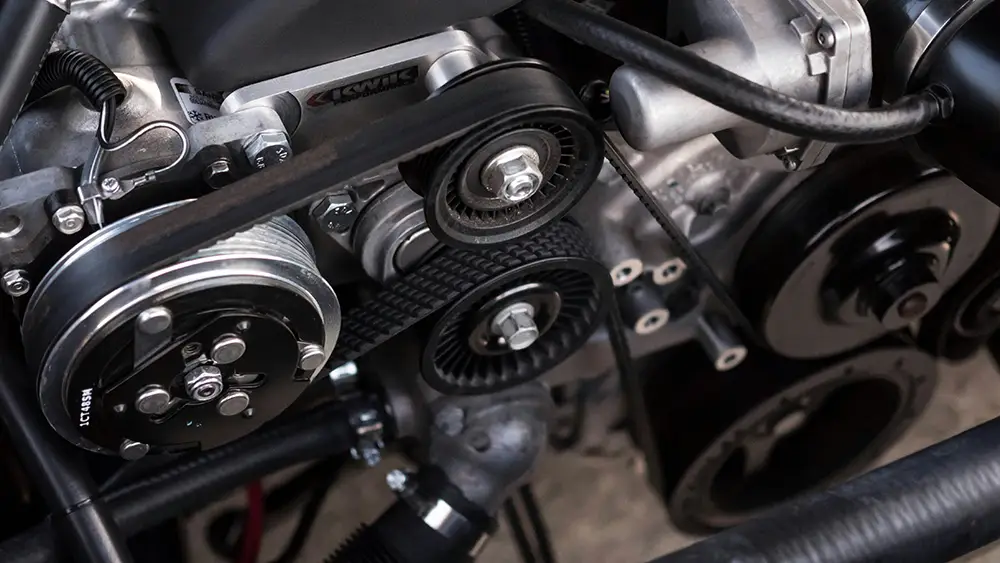 STREET TRUCKS STAFF
.
December 18, 2024
.
Industry News
STREET TRUCKS STAFF
.
December 18, 2024
.
Industry News

Have you ever wondered what makes your car’s wheels spin effortlessly, its engine run smoothly, or its handling feel precise on every turn? If you’re a car enthusiast, you might already know the answer. For those new to the world of automotive mechanics, the secret lies in a small yet powerful component: bearings. Often overlooked by the average driver, bearings are silent innovators, driving technological advancements in the automotive industry. In an era of electrification and high-performance demands, these components must withstand higher speeds, extreme temperatures, and unparalleled precision. So, how exactly have bearings shaped the automotive engineering industry?
Bearings have come a long way from their simple beginnings as friction-reducing tools to becoming indispensable components in the intricate systems of modern automobiles. Their origins trace back to ancient times when logs were used to ease the movement of heavy objects. Over the centuries, advancements in materials —from bronze in early civilizations to brass and steel during the Industrial Revolution— marked significant milestones in bearing development. These innovations arose to meet the growing need for stronger, more reliable materials as transportation technology evolved from industrial and construction applications to becoming an integral part of everyday life.
The 20th century marked a turning point in automotive engineering, with bearings taking on a pivotal role in vehicle performance and reliability. Swedish engineer Sven Gustaf Winqvist revolutionized the industry with his invention of self-aligning ball bearings, which provided a groundbreaking solution to misalignment issues. Alongside the broader adoption of roller and ball bearings, this innovation enabled smoother, more dependable vehicle operations while significantly reducing the need for frequent maintenance. These advancements laid the foundation for the high-performance automotive systems we rely on today.
Among the companies that have grown alongside the evolution of the automotive industry, McGill Bearings stands out as a pioneer and a trusted name. Established in 1905 by James H. McGill in Valparaiso, Indiana, the company initially focused on innovative hardware solutions before specializing in bearings. McGill revolutionized the industry by creating the CAMROL cam follower bearing in 1937, a design that became a standard for industrial and automotive applications. Over the decades, McGill has maintained a reputation for engineering excellence, offering solutions capable of meeting the demands of modern transportation systems. Today, McGill Bearings, now part of Regal Rexnord Corporation, is recognized as a top choice among automotive specialists for its reliability, durability, and cutting-edge designs that cater to the ever-advancing automotive sector.
As human needs evolved, so did vehicle designs, leading to the development of specialized bearings tailored to specific automotive applications. Bearings were engineered to meet the unique demands of wheel hubs, transmissions, and suspension systems, ensuring optimal performance under varying conditions. For instance, wheel hub bearings were designed for seamless rotation and durability, while transmission bearings needed to withstand high speeds and reduce friction in gear systems. Suspension system bearings supported smooth handling and stability, even under heavy loads.
To address the growing performance demands of combustion engines and high-performance vehicles, bearings were refined to endure higher speeds, greater loads, and extreme environmental conditions. Engineers pushed the boundaries of design and material science, incorporating advanced materials like heat-treated steel, ceramics, and composites to enhance durability and reduce wear. Additionally, these innovations aligned with the automotive industry’s increasing focus on sustainability. Modern bearings are engineered to be more efficient, reducing energy loss and minimizing waste, thereby contributing to a more environmentally friendly approach to automotive manufacturing.
Nowadays, bearings play a key role in electric and hybrid vehicles, where quieter operations, unique load distributions, and energy efficiency are paramount. Advanced designs cater to various needs, with smart bearings equipped with sensors that monitor factors like temperature, vibration, and rotational speed. These features enable predictive maintenance, improving reliability and reducing downtime. Such innovations highlight the growing integration of digital technologies into automotive systems, paving the way for smarter, more sustainable transportation solutions.
Additionally, specific bearing types like cam followers contribute to diverse automotive applications. They might go from adjustable mounting for precise positioning, commonly used in conveyor belts, and alignment-sensitive mechanisms to provide enhanced support and alignment.
As we move towards fully autonomous and electric vehicles, the evolution of bearings will continue. Advances in materials, integration of smart technologies, and the development of AI-driven systems ensure that bearings will remain a cornerstone in automotive innovation. Engineers are constantly pushing the boundaries of design to enhance performance, reliability, and sustainability, ensuring that these crucial components adapt to the future of transportation. Bearings are set to play an even more significant role, contributing to the next generation of vehicles that are smarter, greener, and more efficient than ever before.”
Share Link